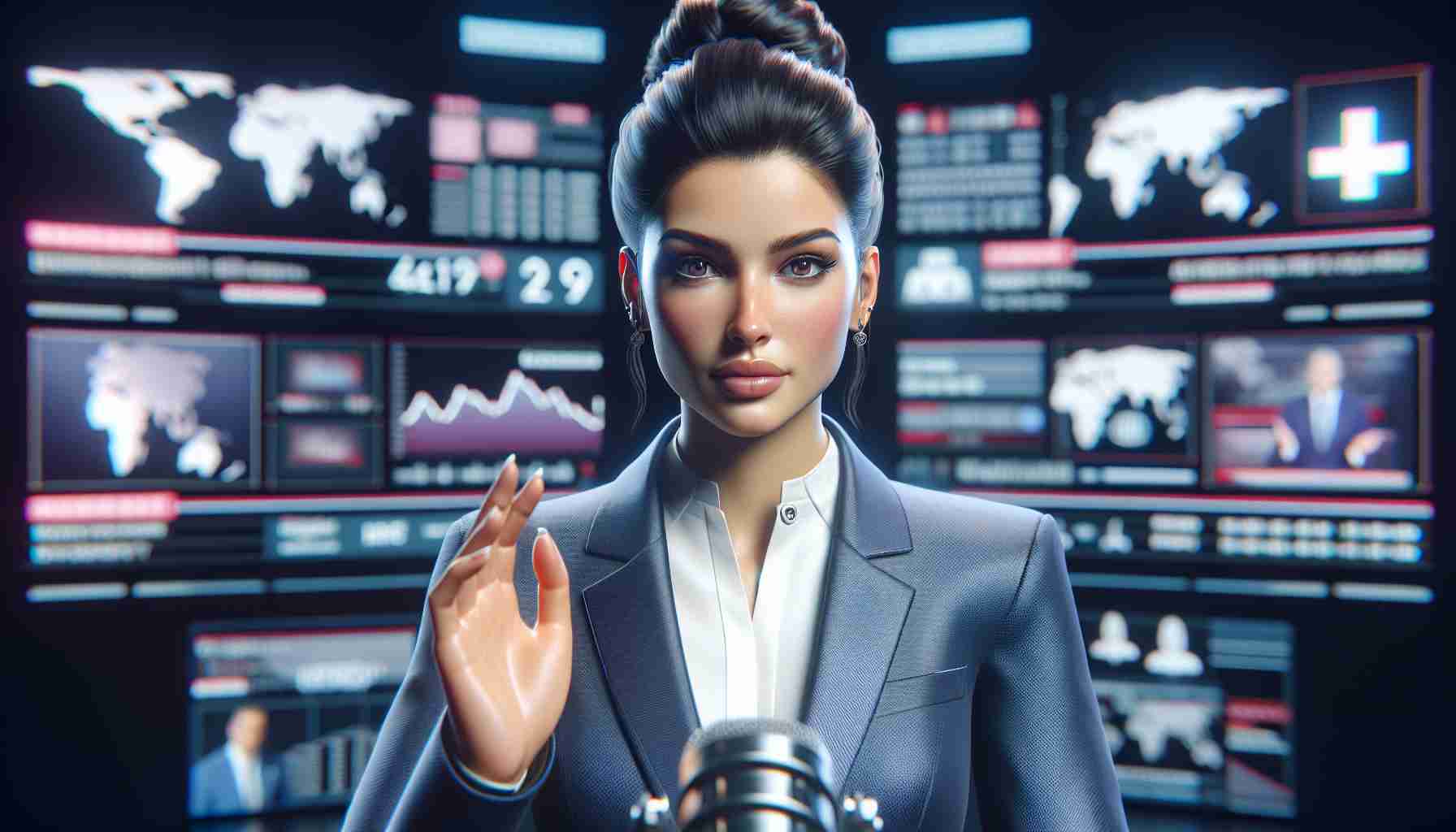In a pioneering move, television programming is embracing the future with Bíró Ada, an artificial intelligence-created news anchor taking the media world by storm. Bíró Ada’s features, including appearance and voice, are the products of advanced AI, built upon existing technologies. The editorial team at Delta carefully curates Bíró Ada’s content, ensuring the anchor’s reports are both informative and engaging.
Bíró Ada has become a fixed co-host alongside Fejős Ádám on the show Delta, indicating the blend of human talent and AI innovation in contemporary broadcasting. Film expert Dudás Viktor appreciates the significance of Bíró Ada’s role in a program keen on highlighting cutting-edge scientific developments. He indicated that this integration sets a new standard in technology and entertainment in Hungary, capturing viewers’ curiosity in a way never before seen on national television.
During an episode, Bíró Ada explains using the latest language model to deliver news eloquently in Hungarian. Striking a delicate balance with new technologies enabled the AI host to share significant science news from around the globe. Meanwhile, Szűts Zoltán, a media and digital education researcher, remarks that artificial intelligence is another leap forward in the digital era. Rather than displacing human labor, AI redefines it, acting as an assistant and enhancing various work aspects. It illustrates the transition technologies bring, challenging us to learn, adapt and eventually integrate them into everyday life.
The emergence of AI-powered news anchors like Bíró Ada represents a significant trend in the broadcasting and media landscape. As AI technology continues to advance, we may observe a broader adoption of virtual anchors and reporters in the industry. These AI figures can work tirelessly, do not require breaks, and can be programmed to deliver news in multiple languages, making them a versatile tool for content distribution.
Current Market Trends:
In recent years, there has been an increase in the use of AI for automating tasks and roles traditionally performed by humans. AI-powered chatbots and virtual assistants are becoming common in customer service, and now media and journalism are also starting to see similar transformations. Virtual anchors could potentially reduce costs associated with human presenters and allow for 24-hour news cycles without the constraints of human endurance.
Forecasts:
Looking ahead, we can expect AI in broadcasting to become more sophisticated, potentially incorporating advancements in natural language processing and deep learning. This could lead to even more realistic and interactive AI anchors. As technology evolves, these virtual personalities may be able to analyze live reports, respond to viewer’s questions in real-time, and provide an ever-more personalized viewing experience.
Key Challenges and Controversies:
Despite the opportunities, AI presence in broadcasting raises significant ethical and practical considerations. There are concerns over job displacement in an industry that already faces significant pressures. Additionally, the potential spread of misinformation by AI, which might not have the same critical thinking and fact-checking capabilities as human journalists, is worrisome. The creation and propagation of deepfakes, which can include synthetic versions of actual journalists or public figures, pose risks for misinformation and fraud.
Most Important Questions Relevant to the Topic:
1. Will AI anchors like Bíró Ada make human anchors obsolete, or will they act as supplements to human-presented news?
2. How will AI in broadcasting affect journalistic integrity and the spread of misinformation?
3. What measures can be taken to ensure that AI anchors are used ethically and responsibly?
Advantages:
– Cost-efficient: AI anchors can reduce the financial burden of employing a full-time news anchor.
– Consistency: Virtual anchors can work around the clock without breaks and maintain a consistent presentation style.
– Multilingual capabilities: AI can potentially present news in various languages, widening the audience reach.
Disadvantages:
– Lack of human touch: AI anchors may lack the warmth and empathy human anchors can convey.
– Job displacement: Increased use of AI may lead to job losses in the broadcasting industry.
– Ethical concerns: The use of AI anchors may blur the lines of authenticity and trustworthiness in news presentation.
For more information on the latest developments in AI technology and its application in various domains, you can refer to the website MIT Technology Review. Please note that although this link is believed to be valid, the status of URLs can change over time.
The source of the article is from the blog exofeed.nl

